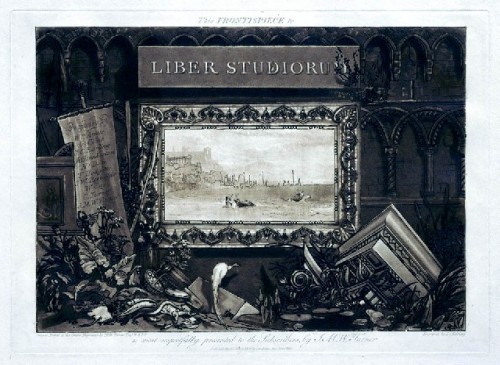Clark Announces Turner Acquisition
Liber Studiorum, or Book of Studies.
By: Ariel Petrova - Jan 06, 2009
The Sterling and Francine Clark Art Institute has acquired a nineteenth-century collector's album of prints from J.M.W. Turner's Liber Studiorum, or Book of Studies. Widely considered to be Turner's "visual manifesto" on the art of landscape, the Liber Studiorum had an enormous influence on artists in the nineteenth century. The new acquisition makes its Clark debut in a special installation, Claude, Turner, Constable: Sir Edwin Manton and the British Landscape. The Liber Studiorum purchase was made possible by a generous donation from the Manton Foundation.
Claude, Turner, Constable: Sir Edwin Manton and the British Landscape explores the Liber Studiorum's place within the British landscape tradition and celebrates its harmony with the works in Sir Edwin's collection, acquired in 2007. The Manton collection, the most significant acquisition by the Clark since its founding in 1955, includes oil paintings, watercolors, chalk drawings, and prints by Turner, John Constable, Thomas Gainsborough, and other leading British artists of the eighteenth and nineteenth centuries. The Liber Studorium will be on view alongside many works from the Manton Collection.
"The Clark is grateful to the Manton Foundation for its continued generosity in the acquisition of Turner's Liber Studorium," said senior curator Richard Rand. "The Liber is an important chapter in the history of British landscape painting that complements perfectly the Manton Collection of British art."
The Liber Studiorum acquisition joins the Clark's recent purchase of sixteen drawings by the French artist Claude Lorrain. Select drawings by Claude will be on view along with oil studies, drawings, and watercolors by Thomas Gainsborough, John Constable, as well as Turner. In addition, two other important landscape print albums will be on view: Richard Earlom's late-eighteenth-century mezzotints made after Claude's original drawings called the Liber Veritatis (Book of Truth), which directly inspired Turner's own Liber; and David Lucas's English Landscape Scenery, a compendium of mezzotints after works by Constable that was in turn a response to Turner's Liber.
The Clark's Liber Studiorum album contains sixty of the seventy mezzotints (prints made from a method of engraving working from dark to light) that comprised the series, which Turner (1775-1851) published intermittently between 1806 and 1819. These prints depict idealized landscapes based on actual locations in England, France, and Italy. Turner self-published his Liber and carried out the preliminary etching for the majority of plates, which he then handed over to professional engravers for completion in mezzotint. In a few cases, he etched and mezzotinted the plates himself.
One of Turner's most ambitious productions, the Liber Studiorum was a ground-breaking endeavor in nineteenth-century print publishing, and was later used as a training manual for nineteenth-century draftsmen. While the precise number of editions is unknown, it is estimated that between 160 and 200 sets were produced. A close examination of the mezzotints contained in the Clark's album finds that they are among the earliest impressions.



